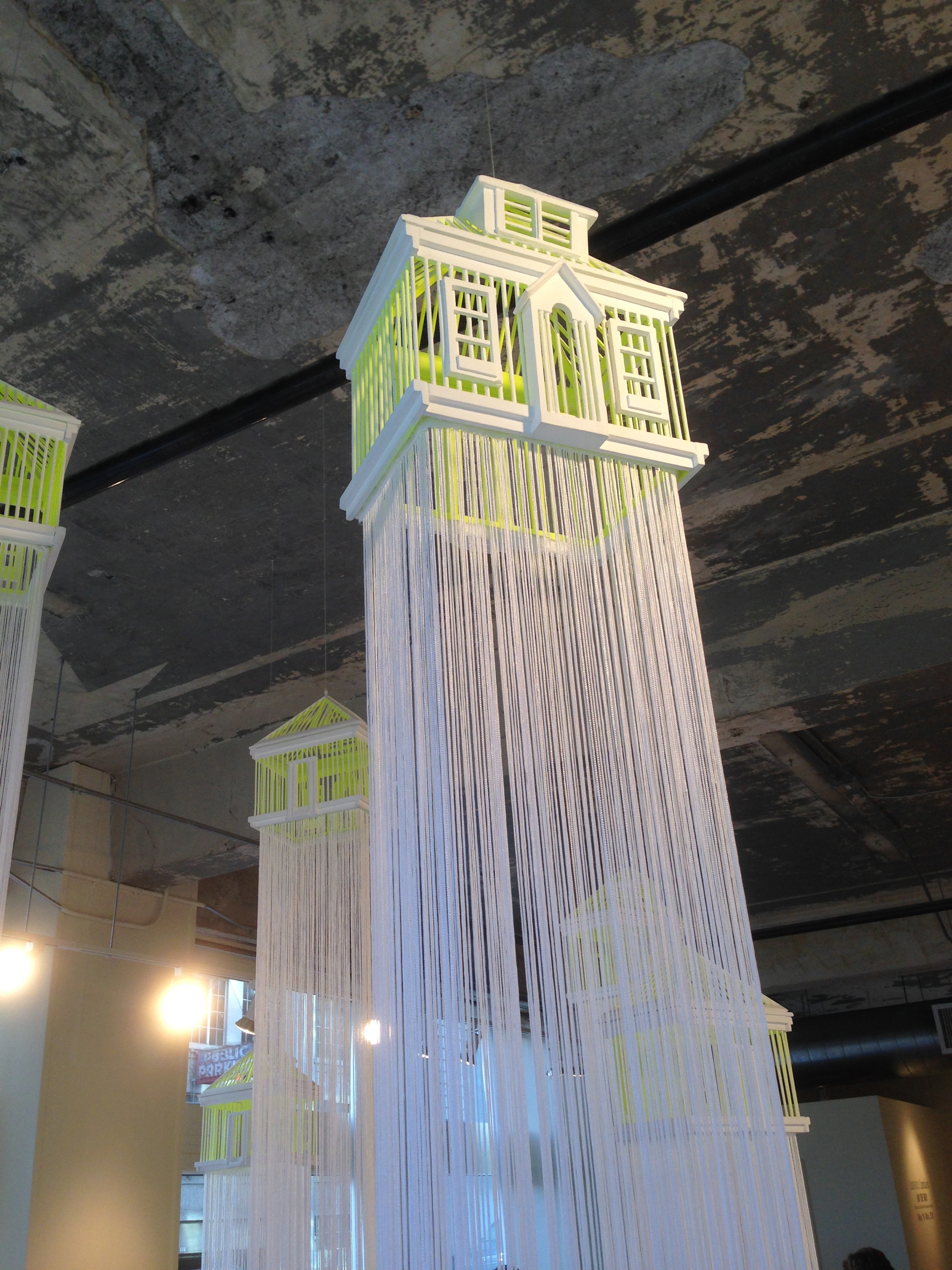Edith Macefield became a celebrity in the last two years of her life (1921–2008), a symbol of gentrification and its discontents. She wouldn’t agree to sell her little Ballard bungalow, now enveloped and preserved by a retail-commercial building. (The tiny cottage may become a vacation rental, according to its new owner; so much for a gallery or cultural purpose.) Now French artist Laurence Landois draws inspiration from the holdout abode in her show On the Way, which includes a series of architectural fantasias of the Macefield House, drawn on graph paper. The form of the house becomes a seed, a design meme, that Landois repeats and repeats obsessively, expanding it into unlikely skyscrapers and dense cityscapes—as if the house had won a larger victory in that urban battle. Dangling in the center of the gallery, like mobiles or Chinese lanterns, are 10 small-scale models of the house, a grouping appropriately called Home Sweet Home. They trail long gossamer-white streamers, something like jellyfish tendrils or skirts. As in the drawings, there’s a fanciful, almost wishful aspect; the multiple houses gain a kind of grandeur, an extra stature despite their size. Edith is gone, but here her home achieves a ghostly afterlife—or perhaps afterlives, which may be part of Landois’ point. It takes more than one house to form a community. Room 104, 306 S. Washington St. (Tashiro Kaplan Building), 953-8104, room104gallery.com. Free. 10:30 a.m.–5 p.m. Wed.–Sat. Ends May 31.
Edith Macefield became a celebrity in the last two years of her




